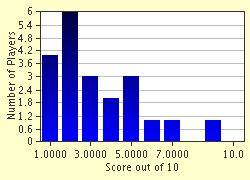Quiz Answer Key and Fun Facts
1. OSPF is classified as which of the following types of routing protocols?
2. What is the default administrative distance (AD) of OSPF?
3. Which version of OSPF supports IPv6?
4. What type of packet do routers using OSPF send on a frequent basis to their neighboring routers in order to establish and maintain network adjacencies?
5. Which of the following is NOT a Link-State advertisement (LSA) type?
6. Beginning with the greatest factor, how is the designated router (DR) and backup designated router (BDR) determined in a DR/BDR election in an OSPF network?
7. In multi-area OSPF, what is the backbone area also known as?
8. Which OSPF router type links between an OSPF autonomous system and networks outside the OSPF autonomous system?
9. What algorithm is OSPF based on?
10. When configuring an interface on a Cisco router to use OSPF, in router configuration mode, what parameter follows immediately after the network and network-address parameter of the command?
Source: Author
cris202
This quiz was reviewed by FunTrivia editor
rossian before going online.
Any errors found in FunTrivia content are routinely corrected through our feedback system.

